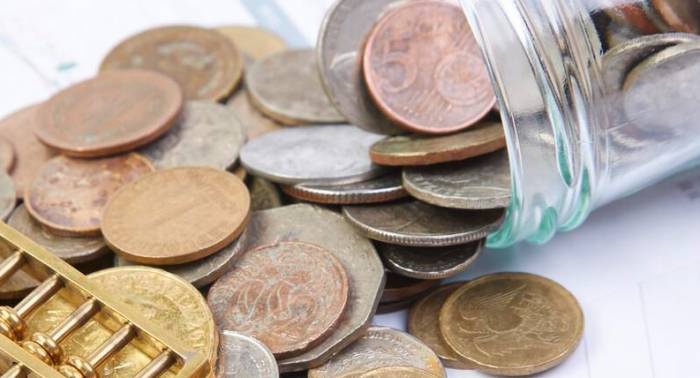Funds Face Redemption Pressure: Strategies to Retain Investors
The recent resurgence of equity funds has led to a notable trend in the investment landscape: increased redemptions. This phenomenon is drawing attention from both public and private fund professionals, as they respond to the evolving dynamics of investor behavior.
As markets experienced a significant recovery after a prolonged downturn, many funds have seen their net asset values (NAV) rise sharply. According to Wind data, between September 24 and October 16, 2023, the Wind Mixed Equity Fund Index surged by 16.56%, with peaks hitting a remarkable 28.28%. However, this encouraging uptick was not without consequence; it inspired a wave of investor redemptions.
Yang Delong, the Chief Economist at Qianhai Kaiyuan Fund, noted, "The rapid rise in the market has led some investors to cash out their gains, putting pressure on several funds that are now facing increased redemption requests." This is echoed by insights from private fund managers who reported that clients, observing some funds' net values nearing the 1 yuan mark, have begun to schedule redemptions.
According to Zhu Runkang, a public fund product manager at Paipai Wealth, the redemptions are driven by two primary factors. First, the market's robust performance prior to the National Day holiday saw equity products rebound significantly, leading investors to recover some of their previous losses or meet their profit expectations. With a sense of security in their returns, many investors are opting to redeem their investments. Second, indications of market corrections after the holiday have caused a shift in investors' risk appetites, prompting them to seek safer alternatives.
Advertisement
Additionally, a private fund manager in Beijing highlighted the profile of clients considering redemptions during this period. A segment of clients, intoxicated by the ease of making profits in a rising market, began contemplating leaving the market entirely. On the other hand, some investors were unhappy with their fund's performance relative to market indices, leading them to question the prudence of their continued investment.
Notably, in the wake of market fluctuations post-October 8, many investors reassessed their situations. They realized the risks associated with trading individual stocks, which at times led to losses, prompting them to feel that keeping their funds could be a comparatively safer choice. There is also a growing recognition among investors of the limitations of their stock-picking capabilities, as well as a declining enthusiasm for the market's volatility.
Wang Yi, an analyst at Jinzhuang Investment under Geshang Wealth, elaborated on the multifaceted factors contributing to the pronounced redemption trend. She attributed the phenomenon to the lackluster stock performance over the past three years, which has left many investors disillusioned. As soon as fund net values began to recover towards their cost basis, a flurry of redemptions followed. Furthermore, the rapid gains witnessed in the short term may lead to heightened volatility, instilling further caution among investors who prefer to exit rather than navigate uncertain waters.
The current wave of redemptions poses significant challenges for many funds, with some nearing a dire prospect of liquidation. Multiple fund companies have begun to issue announcements highlighting that certain products have slipped below the 50 million yuan threshold necessary for maintaining operational viability. This has led industry figures like Yang Delong to note the risk of fund closure should redemption pressures continue unabated.
For example, on October 15, Guolian Fund announced that its Guolian Smart Choice Pioneer Equity Fund had sustained its NAV below 50 million yuan for 45 consecutive trading days, putting it at risk of contract termination. Similarly, on October 12, China Universal Fund reported that its China Universal Jinli Mixed Fund had also breached the 50 million yuan mark for a continuous 40-day period, warning that should the trend persist, the fund may face mandatory liquidation without convening a meeting of unit holders.
In overcoming these redemption pressures, both public and private funds are actively deploying various strategies aimed at retaining existing clients while attracting new ones. Enhanced investor communication and educational initiatives have emerged as essential tools in this regard. Yang Delong emphasized the importance of providing investors with a long-term perspective, encouraging them to hold onto their funds for more sustained growth.
In a coordinated effort, many funds are reaching out to clients, advising them against hasty withdrawals following market rebounds. Some have even publicly announced their diminished asset scales to underline the potential risks associated with liquidation.

Chen Xingwen, Chief Strategy Officer at Heisaki Capital, observed, "While redemptions introduce significant stress on several funds, through proactive communication and strategic adjustments, financial institutions are actively engaging in addressing these challenges." This includes encouraging clients to adopt a long-term viewpoint, as trading stocks can often be a precarious venture that few navigate successfully.
In addition to direct communication, cost reduction has surfaced as a vital component of customer retention strategies. Wang Yi noted that several fund firms are revisiting their management fees and expenditure structures to make investing more affordable, thereby enhancing the overall experience for investors.
In fact, various fund companies are embracing marketing initiatives alongside these adjustments. Prominent entities such as Huaxia Fund, Penghua Fund, and Guotai Fund have led the charge in fee reduction strategies, exemplified by lowering management fees for products like the Huaxia ChiNext 100 ETF from 0.5% to 0.15%, with custodial fees similarly reduced. Active equity funds have also proactively decreased their fee structures in response to market pressures.
Moreover, several public and private funds have begun lifting restrictions on large subscriptions, signaling a desire to reinvigorate interest and inflow. For instance, Jiao Yin Schroder Fund recently communicated that they would resume allowing substantial incoming subscriptions, lifting previous limits significantly for multiple funds. This indicates a concerted effort to not only recover but also to encourage fresh inflows amidst the prevailing market dynamics.
Comments